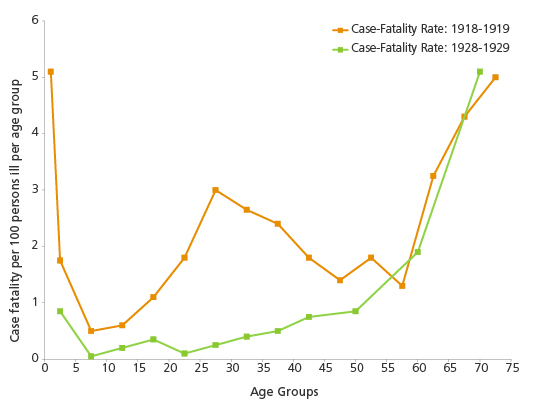Influenza is a disease that has a history for centuries. It has also caused a pandemic that was one of the most deadliest, and one that may never be recreated. It was the 1918 Flu Pandemic, also called the Spanish Flu Pandemic, which let to almost 50-100 million deaths.
Flu viruses have a number of different strains. The strains are labeled as H(number)N(number). H stands for a protein called hemagglutinin, and N stands for neuraminidases. The one that caused the Spanish Flu Pandemic was the H1N1 subtype flu.
H1N1 is more deadly than most others. In 1918, it had a mortality rate of 2-3%. Yet when the H1N1 came back in 2009 (also known as swine flu), it killed less than 1%, thanks to modern technology improvements.
What made the H1N1 strain so powerful? It caused a combination of stronger pneumonia and neurological problems which none other flu strain had. Also from the age to death rate table we see a W shaped curve for 1918, not a U shaped. What this means is somehow people between 20-25 were having a higher death rate than from other flu viruses. Why? We still don’t know.

Source: What the 1918 Flu Pandemic Can Teach Today’s Insurers, https://www.air-worldwide.com/publications/air-currents/2018/What-the-1918-Flu-Pandemic-Can-Teach-Today-s-Insurers/.
Yet what is worrying scientists is another virus strain, the H5N1 strain. This bird flu strain kills 60% of those infected. Yet this virus has not had the ability to have person to person transmission. It is still not a threat now.
Yearly vaccine will lower the odds of getting the virus. Once again what we should do to be safe is to wash our hands with soap and water often. Good hygiene is how to make viruses spread slower.